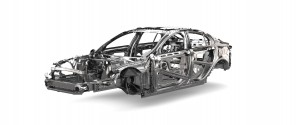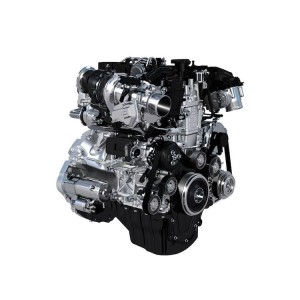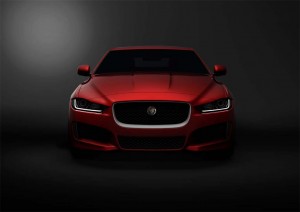The long-awaited compact Jaguar sports sedan will be dubbed the XE, the British maker confirmed during a Geneva Motor Show news conference, adding that the next Jaguar model to migrate to an “aluminum-intensive” design.
The sedan will be a critical addition to the Jaguar line-up and will mark the beginning of the end of the maker’s ties to former parent Ford Motor Co., the XE to be the first model to be powered by Jaguar’s new Ingenium family of engines.
While Jaguar offered just a hint of what’s coming during a Geneva preview, the maker’s CEO Ralf Speth confirmed a production version of the sedan will debut later this year. The Jaguar XE will begin to roll out in 2015, though it won’t reach the critical U.S. market, long the maker’s largest, until 2016.

The Jaguar XE features the first aluminum monocoque product in the segment. The aluminum body is aimed at provide better ride and handling.
“The all-new Jaguar XE compact sport sedan will bring Jaguar into the largest segment of the luxury car market with a dynamic new entry that will challenge the status quo of luxury car brands,” proclaimed Jeff Curry, Brand Vice President of Jaguar North America.
(Jaguar unveils new XFR-S Sportbrake in Geneva. Click Here for more.)
The impending launch fills a yawning gap left open since Jaguar pulled the plug on the ill-fated X-Type line – and considering the surge in demand for compact luxury cars it can’t come to market soon enough.
The XE will be based off an all-new architecture that could serve as the basis for a number of new models, Jaguar officials have told TheDetroitBureau.com. Indeed, it highlighted the broad possibilities with last year’s unveiling of the CX-17 concept vehicle which could, if it passes muster, become the first utility vehicle ever for Jaguar.
(British villains star as Jaguar airs first-ever Super Bowl ad. Click Herefor a closer look.)

he Jaguar XE will be the first user of the Ingenium engines in four-cylinder two-litre petrol and diesel variants.
The Jaguar XE will follow other models, such as the current XJ and XF lines, in migrating from a steel platform to a lighter aluminum architecture. The approach does add cost and manufacturing challenges but it also offers a number of advantages, Jaguar officials assert. For one thing, lower mass equals better mileage. The general rule of thumb is a vehicle will gain an extra mile per gallon for every 100 pounds weight it sheds. Lower weight also allows engineers to improve performance with the same powertrain.
The Ingenium family, meanwhile, will be produced at a new plant in the U.K., and it will be shared by both Jaguar and its sibling brand Land Rover. The maker has yet to offer specific details but is expected to be using a modular design that can be produced in a variety of displacement and cylinder counts. Significantly, it does say the engine is designed to be used in both in-line and transverse vehicle configurations, and in both rear- and all-wheel-drive models.
(Click Here to check out all the new models and breaking news from the Geneva Motor Show.)
The maker’s global design chief Ian Callum describes the new XE as “every bit a modern Jaguar car,” both “practical” and “visually striking.” The front-on teaser image shows that key Jaguar styling cues, such as the wide-oval grille, will be carried over to the XE, albeit with a few key updates. The image shows new L-shaped accent lamps but it remains to be seen whether the headlamps will opt for Xenon, LED or some other technology.
Considering the competitive nature of the compact luxury market, the XE will need to come with a high level of standard and optional features. Market studies show that the generally younger buyers who are flooding to the segment tend to expect the sort of equipment that once would have been reserved for much more expensive vehicles.
Jaguar has scored well in recent months with the new F-Type – which helped it achieve its best global sales since 2005, a total of 76,668 vehicles last year — and it expects to do even better with the F-Type Coupe coming out this year. But considering market trends, a success in the compact market could transform the XE into the brand’s top-seller. So the pressure will be on to deliver a vehicle that avoids the mistakes the maker made with the old X-Type.

